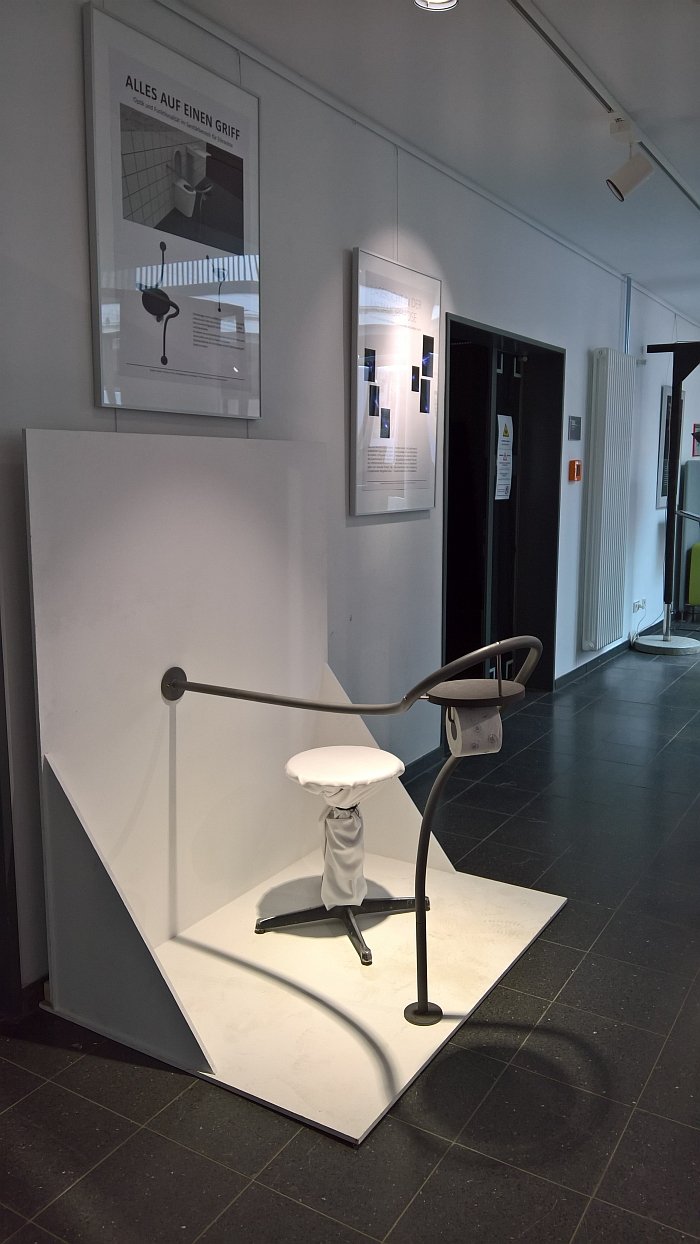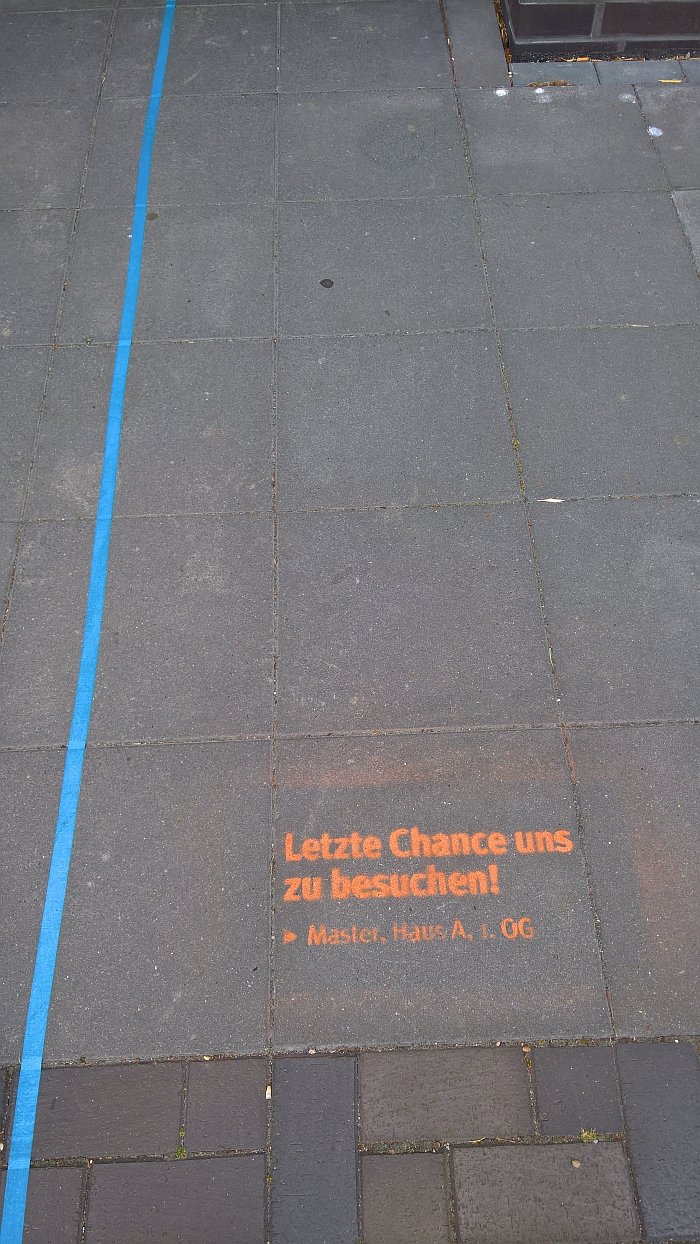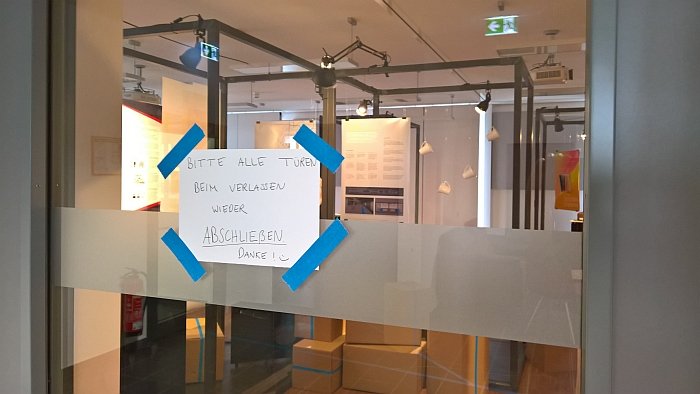We've long considered it an absolute cheek that German high-speed ICE trains stop in Hildesheim. Nothing against Hildesheim, but when one considers other cities in Germany where ICEs don't stop, or stop with an almost insulting (in)frequency, coupled to the closeness of Hildesheim to more major centres and their ICE hubs, it always seemed as if Hildesheim was being unfairly favoured by Deutsche Bahn.
That was until we wanted to visit the Hochschule für angewandte Kunst Hildesheim's Summer Graduation Exhibition, then the ICE stop made perfect sense, was a clear and logical piece of planning, something civilised society couldn't conceivably exist without.....
And the projects on show at the 2108 Hildesheim Summer Graduation Exhibition.......?
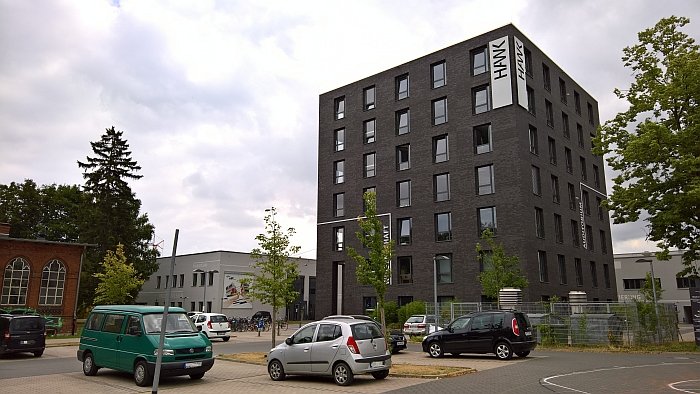
The Hochschule für angewandte Wissenschaft und Kunst Hildesheim/Holzminden/Göttingen, HAWK, was formally established in 2003, traces its history however back to 1971 and the establishment of the multi-disciplinary Fachhochschule Hildesheim/Holzminden, an institution formed through the amalgamation of five existing colleges; in 1974 Hildesheim/Holzminden were joined by Göttingen through the establishment of a forestry department, appropriately enough in the home town of the esteemed forest scientist Carl Heinrich Edmund von Berg.
Today HAWK is represented across its three campi through six faculties: Management, Social Work, Construction in Holzminden; Resource Management and Natural Sciences & Technology in Göttingen; Architecture, Engineering and Conservation, Social Work & Health and Design in Hildesheim
Based in the institute's Weinberg Campus, a former hospital site in the south-east of Hildesheim, the HAWK Design Faculty offers a Master and Bachelor in Design, the Bachelor allowing for specialisation in Advertising Design, Branding Design, Digital Media, Graphic Design, Metal Design, Product Design, Interior Architecture, Colour Design and Lighting Design. The latter two being, according to the institute, unique to Hildesheim.
And the latter of the latter two being one of our highlights of the 2018 HAWK Hildesheim Graduation Exhibition.
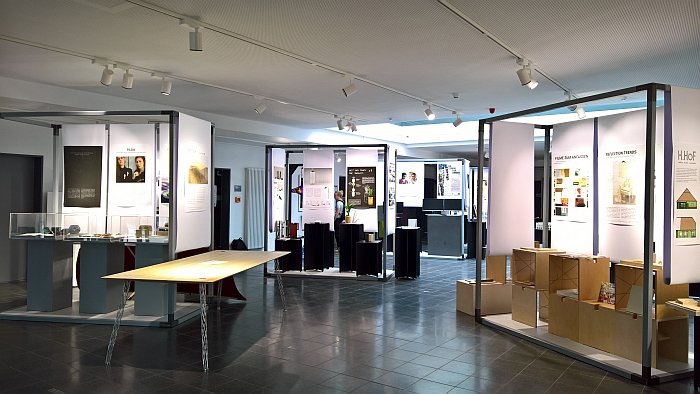
Particularly pleasing about the the HAWK Lighting Design graduation projects was that they weren't concerned with designing lights, as in objects, but with researching the fundamentals of light, as in the phenomenon, be that in terms of its properties, perception or presentation; among the 2018 Lighting Design graduation projects, Florian Ahrens, for example, explored office lighting, for all the relevant importance of illumination of different areas in an office space, both those areas directly occupied as well as those not, while Paul Matyschok explored the perception of brightness, for all the differences experienced between rooms with natural wood surfaces and those with treated, painted, surfaces.
As we noted from Light + Building Frankfurt 2018 as a discipline lighting design is driven by advances in technology, and to which we'd also have to add advances in understanding of the phenomenon light: only if light is properly understood can one create lighting solutions that are relevant, meaningful and appropriate. The best example of such being arguably Poul Henningsen who started with a fundamental study of the newfangled 1920s electric light bulb and created.......
Aside from Lighting Design, and by no means in its shadow, sorry, the graduation projects from the other design specialities produced some interesting, thought provoking and entertaining proposals, including Metal Design graduate Madeline Hobbie's re-imagining of the handrail in disabled toilets, creating something positioned as being more appropriate to the variety of conditions individuals can suffer from and thus being more universal and practical; Product Design graduate Niklas Burgbacher proposed with Care-n a bathroom cabinet for the elderly/handicapped/infirm which doubles as a emergency response system should they fall over in the bathroom, or otherwise become unwell/incapacitated; and with her Power Plants concept Miriam Lüning proposes a plant-microbe fuel cell to power plant pot lamps. And a project interesting not only on account of the concept, process and low-tech, low-cost, local realisation, but also because the genus involved, Geobacter, was only isolated in the 1980s and thus is a bacteria we are still learning about and for all whose many (potential) uses need to be better defined and refined; and on account of its scale and loci of operation Power Plants would appear to offer an application that isn't limited by some of the current problems associated with more industrial applications of Geobacter.
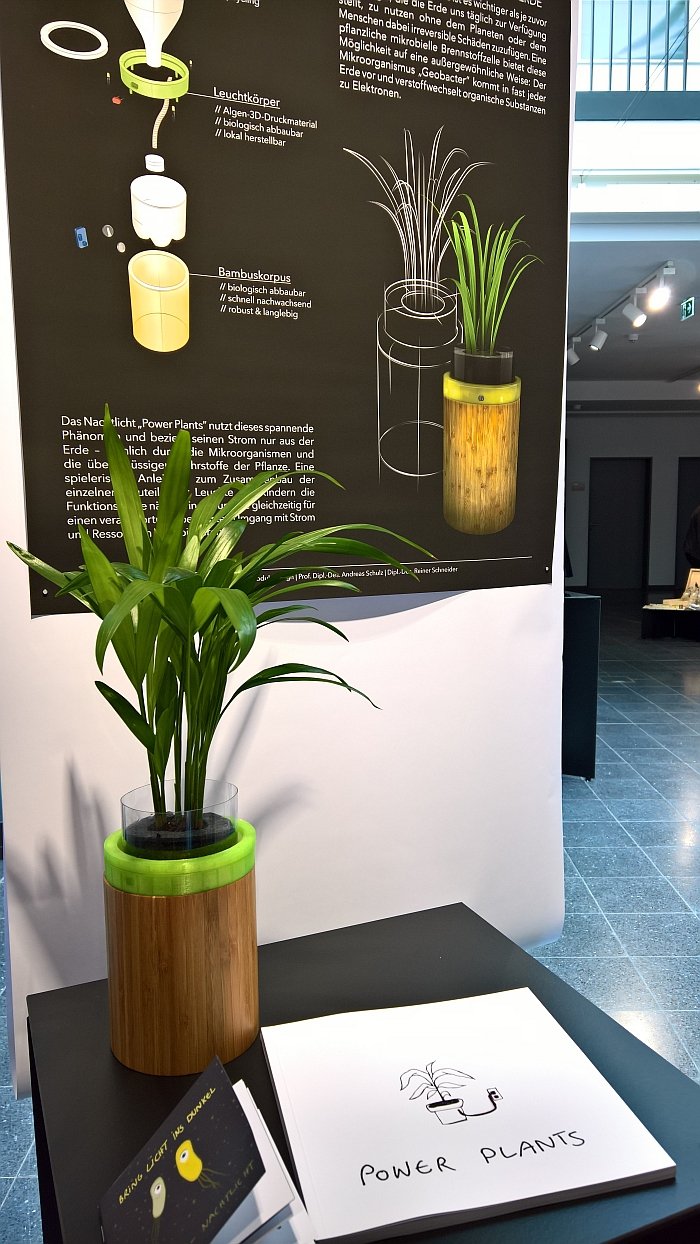
And the Masters projects?
We no know.
For despite us being there at a stated opening time, the Masters rooms were firmly locked. And not just locked, but with notes on the doors saying "Please lock all doors upon leaving. Danke :) ". Yeah. Danke! The smiley face mockingly rubbing the chili-salt into the wound.
If there is a reason the doors are locked, explain that in your notices. If there is no reason the doors are locked......
In the course of any given #campustour we invariably find ourselves on more than one occasion in front of locked doors. Back in the day we'd get real cross. These days.... We don't have to visit design schools, don't have to try to understand designs schools, don't have to concern ourselves with student graduation projects. We want to. We enjoy it. We think its important.
But if students can't organise themselves to unlock a door, we roll on to the next showcase.
And while bad, Hildesheim wasn't half as bad as that which had previously greeted us in Hannover. Niedersachsen, we note, has deficiencies in terms of communication.
Or put another way. Niedersachsen. Klar?
Full details on the Hochschule für angewandte Wissenschaft und Kunst Hildesheim/Holzminden/Göttingen can be found at www.hawk-hhg.de
And all HAWK Hildesheim design faculty graduation projects from 2011/12 - 2018, can be found at http://absolventen.g.hawk-hhg.de/
